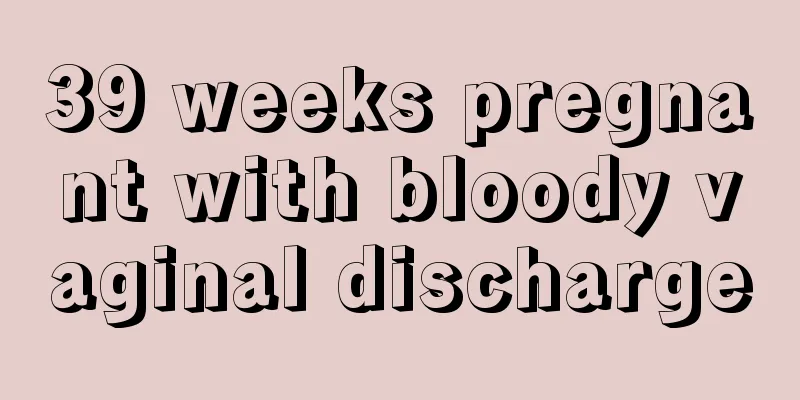What are the precautions while taking ovulation-stimulating drugs?

|
Taking ovulation-stimulating drugs is a method of promoting ovulation. Ovulation-stimulating drugs should not be taken indiscriminately, otherwise not only the ovulation-stimulating effect will not be achieved, but also the health of women will be harmed. Women who are preparing for ovulation promotion must take ovulation-stimulating drugs under the doctor's orders, and should not use drugs indiscriminately to promote ovulation. For those who do not know what precautions should be taken while taking ovulation-stimulating drugs, you can learn in detail below. What precautions should be taken while taking ovulation-stimulating drugs? Let’s take a look at it next. 1. Clomiphene (CC) It is the first choice drug for inducing ovulation and the most well-known in China. It is also commonly known as "duozai pills". It is mainly suitable for women with anovulatory infertility with a certain level of estrogen in their bodies, infertility caused by PCOS and corpus luteum insufficiency, etc., but not suitable for infertility caused by high prolactin. Generally, starting from the 5th day of menstruation, take 50-150 mg/day orally for 5 consecutive days. Ovulation may occur 5-11 days after stopping the drug. If the patient is amenorrhea, progesterone should be taken starting on the 5th day of withdrawal bleeding. If the patient ovulates but does not conceive after treatment, the original treatment can be repeated for 3-4 courses. Its main side effects include: vasomotor flushing, ovarian enlargement, abdominal discomfort, and rarely blurred vision, nausea, vomiting, headache, fatigue, etc. Because clomiphene has anti-estrogenic activity, excessively increasing the dosage or prolonging the use time can cause the endometrium to become thinner, the cervical mucus to become thicker, reduce the receptivity of the embryo or increase the rate of spontaneous abortion, so estrogen can be appropriately added to improve the endometrium. If the estrogen level is low, a small dose of estrogen can be used first for 1 to 3 cycles to increase the sensitivity of the hypothalamus to clomiphene. 2. Human menopausal gonadotropin Each vial contains 75U of FSH and LH, and is suitable for hypothalamic-pituitary anovulation or low gonadotropin. However, because it contains LH, it is not suitable for ovulation induction in patients with high LH levels. Starting from the 5th day of menstruation, 75-225U per day are injected intramuscularly until the diameter of the follicle reaches 18mm. Its biggest advantage over clomiphene is that it increases estrogen levels and promotes endometrial proliferation. 3. Follicle-stimulating hormone, luteinizing hormone-releasing hormone Suitable for anovulators with insufficient hypothalamic secretion. FSH is injected intramuscularly or subcutaneously at a rate of 75-225 U daily starting from the 5th day of menstruation, and HCG is used to induce ovulation at the right time. LH is injected intravenously by micropump pulses, with a pulse interval of 90 to 120 minutes, a small dose of 1 to 5 μg/pulse, a large dose of 10 to 20 μg/pulse, and the medication is used for 17 to 20 days, or 50 μg is injected intramuscularly daily starting from the 5th day of the menstrual cycle for 7 to 10 consecutive days. (4) Human chorionic gonadotropin (HCG): It is highly similar to LH. After other ovulation-inducing drugs are used to mature the follicles (follicle diameter > 18 mm, E2 > 200 pg/ml), a large dose (5000-10000 U) can be injected intramuscularly to induce ovulation. If ovulation does not occur, it can be repeated after 36 hours. The benefit is that it helps support corpus luteum function. (5) Gonadotropin-releasing hormone and its analogs (GnRH, GnRH-a, GnRH-ant): The disadvantages are that the medication time is long and the cost is high. Gonadotropin-releasing hormone (GnRH) can be administered using a pulse pump, resulting in the release of FSH and LH, and is suitable for hypothalamic amenorrhea. Gonadotropin-releasing hormone agonist (GnRH-a): a commonly used drug mainly used in controlled ovulation in assisted reproduction, such as Noradrenaline, Dabijia, Diphereline, Enanton, etc. It is often used to downregulate during ovulation induction. Gonadotropin-releasing hormone antagonists (GnRH-ant) are rarely used. When the follicle diameter reaches 14 mm or on the 6th day of Gn, the antagonist is started until the day of HCG injection. 6. Bromocriptine It can inhibit the secretion of prolactin and is suitable for anovulation accompanied by hyperprolactinemia. The dosage starts from 2.5 mg and is slowly increased and gradually decreased along with the PRL level. Generally, after 3-4 weeks of continuous use, the PRL can drop to normal and ovulation can be resumed. 7. Letrozole It is an inhibitor of estradiol, which can inhibit the conversion of androgen to estrogen and reduce estrogen. It is usually taken orally starting on the 5th day of menstruation, 2.5-5 mg/day, for 5 consecutive days. Letrozole can be tried in patients with PCOS who are resistant to clomiphene. 8. Common side effects of ovulation-stimulating drugs
1. Adverse reactions such as lower abdominal pain, breast swelling and pain, nausea, dizziness, fatigue, rash, blurred vision, etc. may occur. 2. Multiple pregnancy: Increased ovulation significantly increases the chance of multiple pregnancy. Multiple pregnancy is a high-risk pregnancy, which will increase the miscarriage rate and premature birth rate of pregnant women, and is very likely to cause complications such as premature rupture of membranes, pregnancy-induced hypertension, anemia, and heavy bleeding during delivery. |
<<: What are the reasons for unsuccessful ovulation induction?
>>: What are the reasons why ovulation induction does not lead to pregnancy?
Recommend
HPV high risk symptoms in women
HPV virus infection is also called human papillom...
Can I take health supplements if I have breast hyperplasia?
Women with breast hyperplasia should pay special ...
What should I do if my period has not come and I am not pregnant?
Menstruation is a woman's "best friend&q...
How long after cesarean section can I use a belly belt
After giving birth, a woman's body is relativ...
Occasional abdominal pain in 3 months of pregnancy
When a woman is about three months pregnant, the ...
18 things women should never do to fight aging
What should women do to have a good body? Here ar...
Interesting Talk About Medicine丨Tanduspirone (with audio)
Your browser does not support the audio tag...
What are the dangers of staying up late during menstruation for women?
For people nowadays, staying up late is just like...
Chinese medicine formula for cervical cyst
Cervical cyst is a common gynecological disease, ...
I took the contraceptive pill and I have some abdominal pain
Many female friends have said that they feel part...
Is uterine cold serious?
It is not difficult to find that in daily life, w...
Is it okay to get a manicure while pregnant?
There are many things to pay attention to after p...
I suddenly stopped feeling sick at 45 days. Is this a miscarriage?
In the early stages of pregnancy, morning sicknes...
What is the disease of sweating on the female back?
In daily life, we often hear people say words lik...









